|
Rob Jamieson (Professor) and Peter Duinker (Professor Emeritus), Dalhousie University, are the researchers of the Atlantic Maritime Platform of Theme 1: Watershed science and forest management for the forWater Network. They are developing a predictive modelling framework that can tackle the complex impacts of changing source-water conditions and forest management practices on carbon budgets of the Maritime watersheds, which will be an essential tool when ensuring safe drinking water in a changing climate. Changing source-water conditions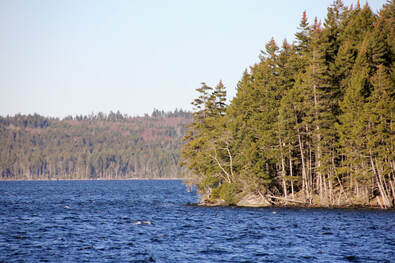 Pockwock Lake Pockwock Lake For three years now both Jamieson and Duinker have been painting a detailed picture of the evolution of the Acadian forest region source-water. The hydrology, chemistry, and ecology of watersheds in Eastern Canada, and indeed in many parts of the world, are changing. One big driver of the change is the global climate, which, alters local weather. Atmospheric warming influences precipitation patterns and a host of other hydrologic processes such as evapotranspiration and snowmelt. Jamieson explains that “water is moving through the landscape in ways potentially different from those of the past few centuries, and chemical processes, particularly in the soil, are altered. Combine that with the substantial reduction in acid precipitation over recent decades, and we find that the chemistry of Nova Scotia’s freshwater resources is not what it used to be.” Water treatment plants like Halifax Water's J.D. Kline Water Supply Plant at Pockwock Lake, NS were designed for water quality conditions of the 1970s. But the water quality is changing, and now has much more organic matter than before. This creates challenges for the treatment process, which was not designed to deal with these higher levels of carbon. Higher concentrations of organic matter, can clog up filtration systems, create taste and odour issues, and contribute to the formation of disinfection by-products when the water is chlorinated. Treatment plant upgrades will be required to deal with changing source-water conditions. "But the water quality is changing, and now has much more organic matter than before. This creates challenges for the treatment process, which was not designed to deal with these higher levels of carbon," says Duinker. The increased organic content of the water is hypothesized to be coming from the watershed forests. So, the question forWater research wants to address is this: what possible ways are there to manage the forest differently so that less carbon makes its way from the forest ecosystems through the groundwater and streams to Pockwock Lake the source water for Halifax? Duinker and Jamieson are exploring scenarios from preservation of the forest ecosystems (meaning no timber harvests) to aggressive, targeted management, including frequent timber harvests. Duinker highlights that “our research can produce preliminary assessments using computer simulation tools, whereas long-term monitoring will be needed to determine whether the management regimes we identify will indeed have the effect of lowering carbon export to the lake.” Unique Approach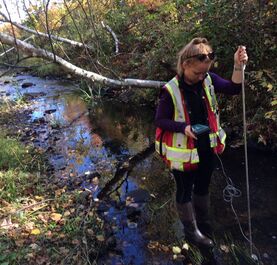 The forWater researchers are using a unique approach that couples hydro-chemistry with forest simulation models. Jamieson explains, “to our knowledge, no-one has adequately coupled hydro-chemical models with spatially explicit forest simulation models. We need this kind of model coupling to address our central research question. We will have a very robust suite of measurements, both in the forests and in the streams, to build and calibrate the models.” Industry partnersDuinker and Jamieson work closely with project stakeholders in the design and implementation of the watershed-scale experiments. Halifax Water and Nova Scotia Department of Lands and Forestry (forWater partners) as well as Westfor Management Inc., and Elmsdale Lumber are involved in managing the Pockwock watershed forest, and play a key role in the success of the project. Duinker also highlights “their involvement improves our research designs and implementation and helps secure their commitment to ongoing refinement of forest management based on the research results.” Impact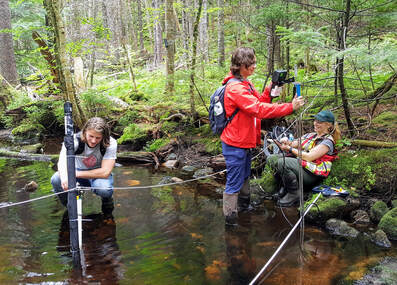 The results of the forWater research will be valuable to two groups of people. Most directly, the managers of the watershed forest and the water supply plant at Halifax Water. In addition, the second group are researchers, consultants, watershed managers, and water utility operators everywhere who might use this approach to understanding forest management for water quality as potentially useful in their own settings and consider adapting the approach to their specific needs. New ideasMany experts have long believed that keeping machines out of the watershed forests and letting the forces of nature prevail in forest dynamics, is the best way to conserve water quality. But perhaps not. Perhaps that only exacerbates the carbon-export problem. Perhaps, from a water-quality perspective, it is better to remove sequestered forest carbon, in the form of forest products, rather than letting the carbon move from living trees to dead trees and ultimately to particulate or dissolved carbon that can get transferred to the water-supply lake causing harmful by-products and potential water supply issues for residents.
Willingness to experiment with new ideas, coupled with innovation and creativity are central elements of the kind of adaptive management we so desperately need to address the water-supply and water-quality issues people face as the global population increases and climate change progresses through the 21st century. Follow more of Peter & Rob’s research on the forWater website here.
0 Comments
Leave a Reply. |
forWater NetworkThe Network provides insights into new scientific research for safe, secure drinking water---globally---which starts with resilient forests Archives
October 2023
Categories |

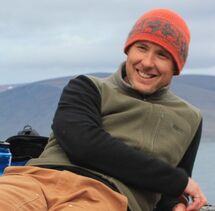
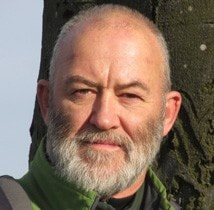
 RSS Feed
RSS Feed

